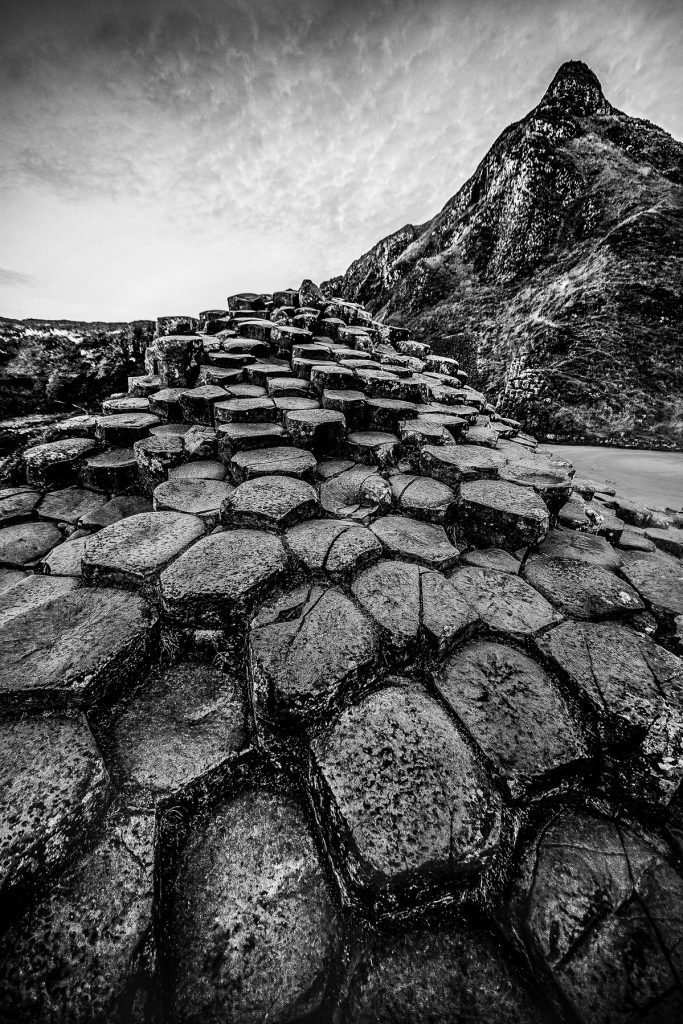How I Got There
About Joel Simpson
Over the past two decades JOEL SIMPSON has traveled extensively in search of exceptional geological locations to furnish the raw material for his visions. He hopes that powerful images made from provocative details of the Earth’s crust can strengthen the aesthetic bond, and therein the spiritual one, between humanity and a planet in distress.
Simpson found his lifelong interest in landscape photography and geology merging with the Surrealist and abstract art he loves in his 2022 book, The Surreal in the Real. He sequenced his images as progressive departures from conventional landscapes into deeper reaches of imaginative realms, and he added explanatory texts that situate it the aesthetics and history of photography in his new book, Faces in the Rocks: Beyond Landscape to Psycho-Geological Photography (2025).

My Mission
My mission is to capture an extensive inventory of mental images, images from the unconscious, imaginative images in rock and ice formations. These images tend to exceed conventional versions of figurative subjects. They are more outlandish, more frightening, more seductive, more detailed than the vast majority of painted or drawn images, merely by virtue of their being conveyed through a medium whose essence is texture, and whose shapes are the products of physical forces, unconstrained by a human imagination.
I have staked out four stages in my journey towards this mission,: Landscape – Abstraction – Figuration – and Fiction. None of these is a new discovery, but the deserts and badlands that I visit to capture such images provide a much richer source of naturally occurring Surreal-tending images than has been collected by my predecessors. Also, there are images that straddle adjacent stages: landscapes that also function as abstract compositions (especially drone captures), abstractions with suggested or “liminal” figuration, figuration that suggests an imaginary world, and finally, closing the circle, landscapes that suggest fictional scenes.
My Work
Spectacular color landscapes still charm me, although the fine-art photography world has largely moved beyond them, and they have drained into the inventories of stock image companies. In my quest for them over the years, I periodically happened upon sites with particularly bizarre formations—rock, mud, ice—which, rather than evoking an exhilarating location, pointed beyond themselves, perhaps touching something in my unconscious. As visionary photographer Minor White (1908–1976) said, “One should not only photograph things for what they are, but for what else they are.”
This is especially true of these very special places of bizarre geology: Bisti and other badlands (New Mexico, South Dakota), lava fields (Hawai’i), slot canyons (Arizona, Utah), Crack-in-the-Ground (Oregon), Little Finland (Nevada), Valley of Fire State Park (Nevada), Goblin Valley State Park (Utah), Fantasy Canyon (Utah), and also in waterfronts abroad in Ireland, Wales, France’s Ile de Ouessant, and “lunar valleys” in Sardinia and Corsica. In such places competing geological forces of uplift and erosion have left us with acres and acres of mind-boggling shapes, an open invitation for one’s imagination to transcend itself.
Ice, instantaneous geology, comes in an endless variety of shapes, often evocative ones. I recently returned from two weeks in Iceland, where I was completely seduced by its bizarre forms—in the frozen floor of Kerið Crater, in two glacial ice caves, in streams, waterfalls, and in a huge lava tube. You´ll find them in their own gallery on this site. I also discovered that the most natural use of the 180-degree fisheye lens is to photograph the ceiling of a grotto. The result looks like a heavenly body, since the concave formation can also be read as convex.
The capture process in the field is mostly intuitive. Often I’ll discover a visual reference to something in particular only after I’ve edited the image. However, I refrain from giving (most of) them titles in order to let the viewer’s imagination lead the way.
During the initial stages of the pandemic I developed editing techniques to make my visions more explicit and powerful—while not altering the original image through composites or montages. The physical forces that created these forms (plus the incident sky) have a powerful integrity,that usually needs to be made clearer for all the elements to work together for maximum effect.

Endorsements of Joel Simpson’s Works
For FACES IN THE ROCKS (2025)

“Joel Simpson demonstrates that we shape and are shaped by land outside and inside. Ranging from abstraction to surrealism, through associative explorations that render the unconscious conscious, he invites us on fantastic journeys, offering us stimulating perspectives and tools designed to enrich ourrelationships with land/ourselves.”

“Joel Simpson demonstrates that we shape and are shaped by land outside and inside. Ranging from abstraction to surrealism, through associative explorations that render the unconscious conscious, he invites us on fantastic journeys, offering us stimulating perspectives and tools designed to enrich ourrelationships with land/ourselves.”

“Joel Simpson demonstrates that we shape and are shaped by land outside and inside. Ranging from abstraction to surrealism, through associative explorations that render the unconscious conscious, he invites us on fantastic journeys, offering us stimulating perspectives and tools designed to enrich ourrelationships with land/ourselves.”

“Simpson’s breathtaking images—manifesting ‘psycho-geological photography’—stand as a testament to the profound imprint the earth leaves on the human mind and the power of photography to reveal such truths. It is the rocks that man has found universal forms and faces. In fact, the human psyche itself mirrors the layers and crust—from the conscious surface to its enigmatic core. To witness these photographic revelations is nothing short of groundbreaking.”
For Playgrounds for the Mind (2022)

“Playgrounds for the Mind reveals Joel Simpson as part genius, part crazy man with his intense passion for what he calls geological art photography in near and far world locations. The images are gorgeous, strangely compelling beauties rooted in Surrealism. They beckon me to their sites which I know I could never find; Simpson has saved me the trouble and makes them even more beautiful than they probably are.”

“Nature, at its most non-human magnificence, isnot malevolent, it is indifferent. In Joel Simpson’s view it is also a place where the human can interact with the great inhuman forces by offering imagination a playground....Simpson travels all over the earth to find the most extraordinary and bizarre geological sites, then to photograph their most complex rocks. With help from Carl Jung, André Breton, or your own dreams, you can find—at some unconscious or conscious depth—familiar déjà-vus from the history of art or the nightmares of your tribe.”

“Simpson claims a Surrealist pedigree to his current work that may reveal mysterious figures in rock formations, but whether they’re there or not, the work is striking.”

“Playgrounds for the Mind is a terrific mind-opening (and eye-opening) work. Congratulations.[Simpson has] invented a whole new way of seeing.”